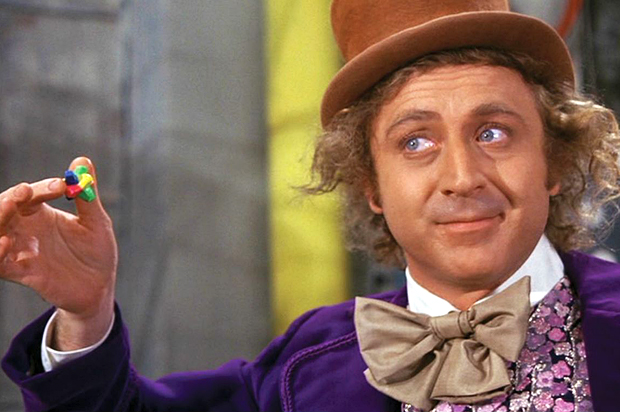Sandra Gilbert’s book, The Culinary Imagination:From Myth to Modernity, has been excerpted in Salon.com.
http://www.salon.com/2014/08/31/broccoli_gross_more_candy_please_willy_wonka_childrens_literature_and_how_we_learn_to_love_food/
Children’s books revel in the romance of food—and why not? When the baby is weaned from her first desire, the loss of the breast—with (if all goes well) its apparently ceaseless satisfactions—promotes further aspirations: the endless pleasures of Cockayne, the walls of sugar, the wells of delight, the spouts of syrup. Even before I read about such goodies in the Raggedy Ann and Andy stories—the Deep Deep Woods with its lollipop plants and Cookie Land with its sugar-frosted family and raisin-stuffed cake chickens—my father used to charm me with comparable tales. He was a man who loved the soda fountain at Schrafft’s and often took me there to indulge in Broadway sodas (chocolate syrup, coffee ice cream, vanilla soda, a hint of mint) and big flat cookies that looked almost like the smiley heads of the Raggedies. “Imagine, Sandra,” he’d say, “a land with ice cream mountains and chocolate rivers and candy bushes. . . .”
Gilbert’s writing is like a banquet–rich, colorful, and full of surprises–and she captures both culinary delight and dread of appetite in children’s books.
We imagine children’s books as cosy, and so they often are, yet at the same time their cosiness compels because the strongest tales acknowledge the dread that always shadows comfort. To be sure, quite a few kids’ classics are realistic in the usual sense of the word. From Louisa May Alcott’s Little Women and Johanna Spyri’s Heidi to Laura Ingalls Wilder’s Little House on the Prairie and Farmer Boy, novelists represent children eating muffins, drinking goat’s milk, gobbling apple turnovers in settings that are grounded in history and society—landscapes far less unlikely than the exotic places inhabited by Charlie, Mickey and the Raggedies. Yet these books too feature dream meals and dwell on the dangers of hunger, one’s own hunger and the hungers of others. Lurking behind their quotidian scenes, as behind the gastronomic scenes in so many contemporary narratives, are both the satisfactions of primordial desires and the perils of the oven from which Hansel and Gretel escape but into which they shove the wicked witch, the deadly stickiness of candy, the grinding teeth of the machines that pulverize cacao beans—along with nasty little boy has-beens—into fudge, the glug-glug of the milk bottle out of which one might or might not rise into a milky way of one’s own. In this fashion, the ambiguity of our first kitchens prepares us for the complex imaginings of the good, bad and weird flavors of kitchens to come in adulthood.
